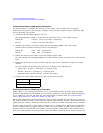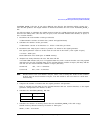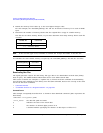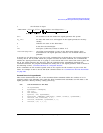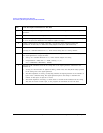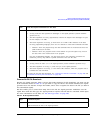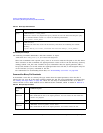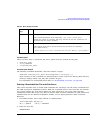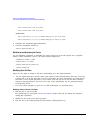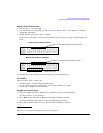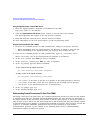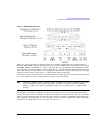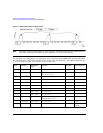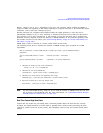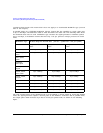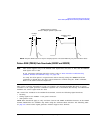
302 Agilent N518xA, E8663B, E44x8C, and E82x7D Signal Generators Programming Guide
Creating and Downloading User-Data Files
User File Data (Bit/Binary) Downloads (E4438C and E8267D)
3. Configure the remaining signal parameters.
4. Turn the modulation format on:
:RADio:CUSTom:STATe On
Modulating and Activating the Carrier
Use the following commands to modulate the carrier and turn on the RF output. For a complete
listing of SPCI commands, refer to the SCPI Command Reference.
:FREQuency:FIXed 2.5GHZ
:POWer:LEVel -10.0DBM
:OUTPut:MODulation:STATe ON
:OUTPut:STATe ON
Modifying User File Data
There are two ways to modify a file after downloading it to the signal generator:
• Use the signal generator’s bit file editor. This works for both bit and binary files, but it converts
a binary file to a bit file and adds a 10-byte file header. For more information on using the bit
file editor, see the signal generator’s User’s Guide. You can also access the bit editor remotely
using the signal generator’s web server. For web server information, see the signal generator’s
Programming Guide.
• Use a hex editor program on your PC or UNIX workstation, as described below.
Modifying a Binary File with a Hex Editor
1. FTP the file to your PC/UNIX.
For information on using FTP, see FTP Procedures. Ensure that you use binary file transfers
during FTP operations.
2. Modify the file using a hex editor program.
3. FTP the file to the signal generator’s BIN memory catalog (directory).
:RADio:CUSTom:DATA "BIT:file_name"
:RADio:CUSTom:DATA "BIN:file_name"
Framed Data
:RADio:GSM:SLOT0|1|2|3|4|5|6|7:NORMal:ENCRyption "BIT:file_name"
:RADio:GSM:SLOT0|1|2|3|4|5|6|7:NORMal:ENCRyption "BIN:file_name"



